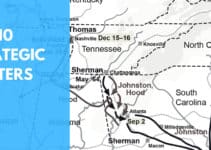Loops help explain winning growth strategies. Loops flatten an otherwise complicated, tangled process. Loops compound over time as the team feeds each part of the loop. Agile loops used by small teams can outmatch, outcompete, outmaneuver competitors without the competitor realizing what’s going on to begin with. Loops are the growth strategy for most of the highest growth companies.
“Loops are closed systems where the inputs through some process generates more of an output that can be reinvested in the input.”
— Brian Balfour
Why loops? The alternative is the funnel with massive planning, massive investment and siloed teams. Loops, on the other hand, provide agile teams the ability to move through cycles faster. It’s not always the largest marketing budget, the largest company, or the best technology that wins. In fact, small, agile teams have an advantage. In one study, small militaries won a remarkable 25% of the time¹. Even with larger resources, better technology, higher skill against them, the smaller teams have surprisingly high odds of winning.
Bezo’s Amazon Growth Loop
On a napkin, Bezo drew the first iteration of Amazon’s growth loop to help explain Amazon’s growth strategy. As the Amazon team feed each part of the loop the flywheel speed increased and compounded. The loop feeds growth over time.
More selection means a better customer experience which means more traffic. More traffic means more sellers. More sellers means more selection. The compounding effect takes over.
Boyd’s OODA Loop: The Father of Strategy Loops
John Boyd started as a fighter pilot. He could beat any pilot and developed the manual used for fighter pilot maneuvers. Boyd was behind many of the innovations behind the F-16. Boyd also studied conflict to create his Patterns of Conflict. This created the OODA loop. The OODA loop would go on to change how wars and conflict are fought. In 1991, Boyd was able to showcase the OODA loop with the rapid collapse of Saddam Hussein’s forces in the first Gulf War against Iraq.
OODA Loop
- Observe — pull in all relevant information
- Orient — understand how that information fits into the current situation
- Decide — make a decision on the direction to move forward
- Act — implement the decision across teams
From there iterate and repeat the loop as well as figure out ways the team can speed up the cycle. OODA loops work best in decentralized, high trust teams. Moving through each cycle of the loop surprises competitors and disorients enemy teams.
How to Use an OODA Loop
The agility and speed of the OODA loop relative to your competitors determine the ultimate outcome. Consider Toyota’s production system could turn out a car in two years while Detroit took three³. Toyota was able to Observe, Orient, Decide and Act on consumer preferences, production systems, design–faster than Detroit.
“If someone truly understands how to create menace and uncertainty and mistrust, then how to exploit and magnify the presence of these disconcerting elements, the Loop can be vicious, a terribly destructive force, virtually unstoppable in causing panic and confusion and—Boyd’s phrase is best—“unraveling the competition.” This is true whether the Loop is applied in combat, in competitive business practices, in sports, or in personal relationships. The most amazing aspect of the OODA Loop is that the losing side rarely understands what happened.”
― Boyd: The Fighter Pilot Who Changed the Art of War
The strategy behind the OODA loop isn’t merely to win in the marketplace. Its real power comes from the ability to shape a market. How do you want to win on your own terms? Create the market conditions that work best for you and your team.
Loops are also a sustainable strategy. Unlike the tactic driven marketing decisions, a team revisiting each cycle of the loop will create new tactics competitors haven’t exploited. Loops also rely on orienting and reorienting the team to exploit the greatest opportunity for growth. Finally, loops transcend team function to organize the team around the same goal. It’s not marketing vs product, but the team against the competitor. That might be the greatest power of the OODA loop: team unity tracked against the same goal.
Footnotes
- https://www.nytimes.com/2003/02/06/business/economic-scene-military-manpower-leadership-are-pluses-but-battles-are-hard.html as seen in Certain to Win
- Certain to Win by Chet Richards
